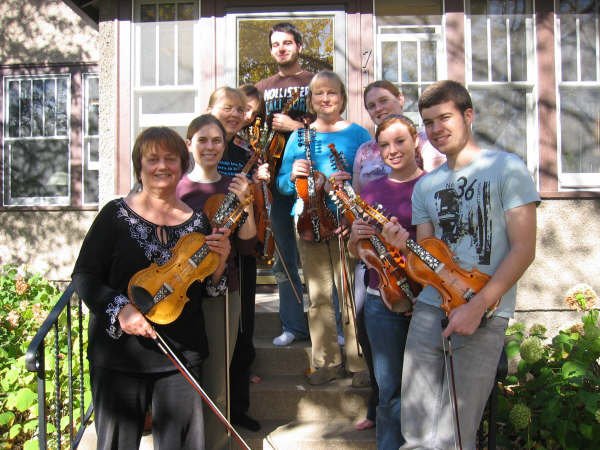For folks new to this blog, each post typically has three sections: a personal update, a view from 30,000 feet of things I’ve learned in my research, and Nordic Nibbles: stories and tidbits about Norwegian culture.
Personal Update
To quote the 21st Century Canadian philosopher Justin Bieber, “Is it too late now to say sorry?” After a brief hiatus, the blog is back friends.
As I write this, it’s just after lunch and I’m sitting in my office, looking out the window at the university plaza that was once a slippery sheet of ice, but is now covered in melting piles of snow and scattered gravel paths where we once carefully traversed. I’m drinking a Pepsi Max, Norway’s favorite soda and poor substitute for my once-rampant Diet Coke addiction. My officemates have their headphones on and a cup of coffee in hand, an open window is letting in the crisp March air, and we’ve reached that rare time in a shared workspace where we’re in a quietly productive groove. No one dares to disturb the peace.
Last fall, we Americans received numerous warnings from locals about the challenges of winter in Scandinavia: months of darkness and cold. Certainly this describes the seasonal conditions, with less than 6 hours of daylight here in the southern part of the country and record low temperatures in Oslo below -30°C. But as a Texan who needed a break from sunburns and sweating, I loved this winter.
Here’s why:
A proper introduction to German Christmas Markets with my Holm cousins living in Europe
Spending the Christmas holiday with my extended family in Immenstaad am Bodensee.
Traveling to Copenhagen and Stockholm over New Year’s with my friends from the US - Courtney and Louisa!
Julebord (Christmas Table) with dear friends, most of whom are recent transplants to Oslo too. Pinnekjøtt (lamb ribs) is now a Christmas favorite.
Performing with the University of Oslo Symphony Orchestra at our Advent Concert.
Practicing with the SISCO Research Group for our performance at the workplace Julebord. Spoiler: we brought the house down with a Weird Al Yankovic-style “Research Paradise.”
In the next post, I’ll share about my visits to teacher education programs around the country, presenting my research at the Fulbright Norway seminar, and what my plans are for next year.
Research Update
During these past few months, I immersed myself in the second phase of my research which involved interviewing stakeholders in the Norwegian teacher education system. These stakeholders are grouped into four categories: policy officials, teacher educators, scholars in teacher education, and school administrators. Getting folks to agree to participate in interviews has at times been challenging, especially without established relationships. But my advisor has been fantastic at employing the “Hey, have you met Ted?” strategy, and being a Fulbrighter has opened a surprising number of doors.
For example, I crashed a national teaching conference I wasn’t registered for. Someone came up and noticed my lanyard, asked if I was a current Fulbrighter. After a few exchanges I learned that she was not only the President of the US-Norway Fulbright Association Board, she was a retired professor who formerly worked in the very institute I now work at. She then kindly sat next to me for the duration of the conference, translating what the speakers were saying and writing nearly 10 pages of notes providing additional context. Truly a gift.
Queen Doris Jorde!
When I initially developed my project proposal, I had intended to use the interviews to develop policy recommendations for state leaders back in Texas. Since then, my project has since expanded to include co-authoring a qualitative analysis of these interviews for submission to a journal with my advisor. Previous analyses have found that Norwegian policymakers and teacher educators have different beliefs about what motivates people to become teachers, which may negatively affect recruitment to the teaching profession (Nesje, Brandmo, & Berger, 2017), and have also examined the discourse between education policymakers and the teachers’ union in Norway (Mausethagen & Granlund, 2012).
These analyses happened prior to reform implementation, and no such analysis has yet compared the perspectives of teacher education stakeholders amidst the current reforms. Our research question asks how do different stakeholders perceive the policy reforms to primary and lower secondary teacher education in Norway when it comes to recruitment, retention, and preparation of new teachers? Essentially, we’re asking leaders if they think the reforms are working, and what what improvements remain. I am excited to write a publication that feels like a substantial contribution to the conversation about education policy in Norway, and to hopefully give back meaningfully to the community here who have been so generous to me.
I’ve completed 70% of my interviews by this point, and recently began the thematic analysis process. This type of analysis requires combing through the interviews and creating codes to describe potential themes between the interviews, which can later be analyzed to develop conclusions. While I have only just begun this process, I’ve already uncovered a number of prominent themes:
Recruitment: Recruitment numbers for teacher education dropped precipitously these past two years across the country. Though teacher education is now a 5-year integrated master’s degree, most leaders believe that the duration and rigor of teacher training aren’t deterring recruitment. Instead, it’s the working conditions of in-service teachers in classrooms that seems to be the primary factor for why students are less interested in pursuing teaching as a profession.
Retention: Policymakers and teacher educators agree that retention within the program remains strong. These two groups also say that student’s who leave the program don’t do so because of the new requirements (like a master’s thesis), but instead leave the program after conducting classroom observations of teachers and realizing the intense demands of being a teacher. There also seems to be disagreement however about efforts to retain new teachers as they matriculate from the university to the classroom. The Ministry of Education stated in the strategy document outlining the reforms that improvements would be made to the induction process, such as addressing mentorship of new teachers. Most stakeholders interviewed seem to be unaware of any initiatives or policy changes made by the Ministry in this area.
Preparation: There is significant debate between scholars, teachers, and teacher candidates as to whether a master’s thesis is relevant and necessary for primary and lower secondary teachers. Policy officials and teacher educators however are vehement defenders of the master’s thesis, citing the improved mindsets, values, and skills learned through the process. This friction aligns with a finding from an OECD learning visit to Norway during the first year of the reform implementation, where they identified a “lack of communication, understanding, and coherence of the reforms.” Interestingly, programs who were early adopters of the master’s thesis requirement say that these debates are no longer an issue in their community, perhaps indicating that it simply takes time for a reform to be understood and accepted widely.
Nordic Nibbles: Janteloven (The Law of Jante)
As an American, there are many times where I feel out of place, loud, and clumsy here, despite my best efforts. There are unwritten rules that govern much of Norwegian society, leading to what I perceive as a more cohesive society than in the USA, but these unwritten rules can take a while to pick up on. Take riding on public transit for example: even if there’s an open seat next to someone, you shouldn’t sit there unless the standing area has gotten too crowded.
During my first few weeks here, a helpful colleague informed me that it would be important for me to learn about Janteloven, a humorous set of 10 “laws” written by author Aksel Sandemose that are considered universal across not just Norway, but the whole Nordic region:
You shall not think you are anything special.
You shall not think you are as good as us.
You shall not think you are smarter than us.
You shall not convince yourself that you are better than us.
You shall not think you know more than us.
You shall not think you are more important than us.
You shall not think you are good for anything.
You shall not laugh at us.
You shall not think anyone cares about you.
You shall not think you can teach us anything.
Though the laws are written in jest, they reflect important factors of Nordic culture. Firstly, there’s a particular emphasis placed on the collective us over the individual you, reflecting how the society is placed ahead of the individual. Individuals then must downplay their needs and achievements. It creates a sense of social stigmatization of people who break the rules, but also promotes equality and egalitarianism across society. Though it was written as satire, to many in Norway it feels as significant as the 10 Commandments. Some Norwegians bristle against the law though, saying that it prevents greatness – one town even created a grave and “buried” Janteloven, saying that it is officially dead.
Janteloven in many ways explains why the Nordic countries are well-regarded globally for their strong societies: gender equality, universal healthcare, strong social welfare, high educational outcomes, and some of the happiest countries in the world. It also leads to some interesting cultural differences. For example, most people are on a first name basis, even students and teachers. While in the US you would often see academic achievement ceremonies or “stars of the week” bulletin boards, this is not a common practice in Norwegian schools. When getting on public transportation, there is no turnstile to go through – it is just expected that you’ve paid for a ticket, and it is rare to have an inspector ask to see yours.
There are a few hilarious pop culture examples that I think beautifully illustrate this concept:
Alexander Skarsgård hilariously explains Jantelagen (the Swedish version) to Stephen Colbert and an American audience.
Danish actor Mads Mikkelsen did this commercial for Carlsberg, a popular beer across Scandinavia. Hilarious ending.
You can sign up below to receive an email directly from me when I share a new post, and thank you to my friends and family who have reached out with things they’d like to hear about!













































































